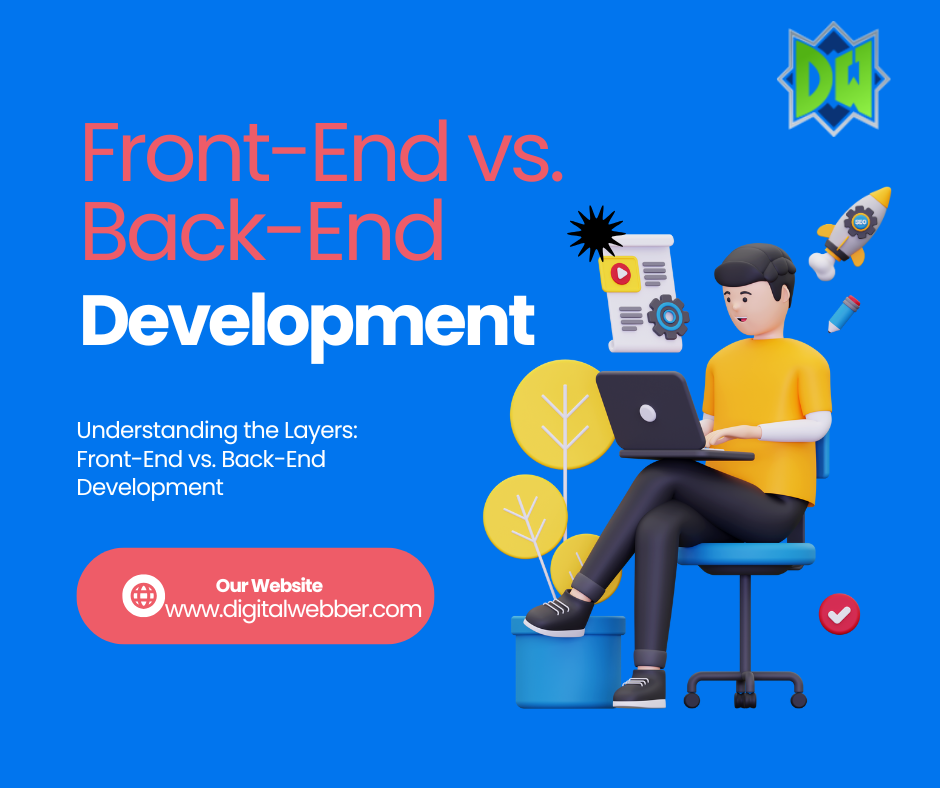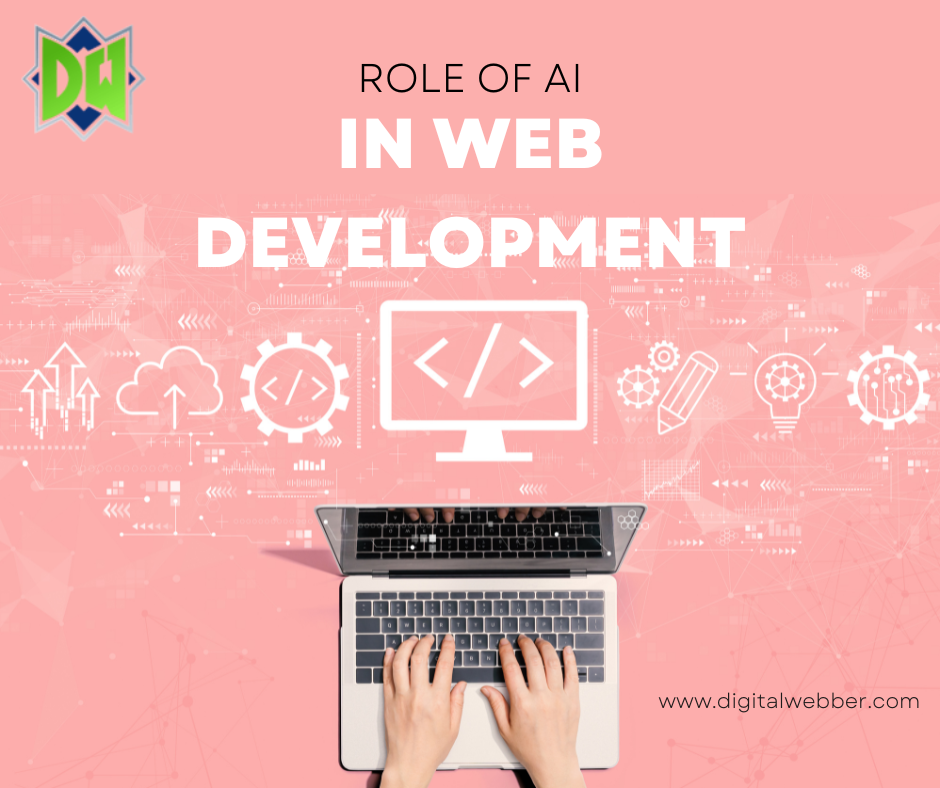In the world of web development, understanding the distinction between front-end and back-end development is crucial for anyone looking to create a successful online presence. While both areas are essential to the functionality and aesthetics of a website or application, they serve very different purposes. This blog will explore the key differences between front-end and back-end development, how they work together, and why businesses should consider investing in both areas to enhance their digital strategies. Additionally, we’ll highlight how Digital Webber can assist in these services.
Understanding Front-End Development
Front-end development refers to the part of web development that focuses on the user interface (UI) and user experience (UX). It encompasses everything that users interact with directly in their web browsers. This includes layout, design, text, images, buttons, and navigation menus. The primary goal of front-end developers is to create an engaging and intuitive experience for users.
Key Technologies Used in Front-End Development
- HTML (Hypertext Markup Language): HTML is the backbone of any website. It structures the content on the page by defining elements such as headings, paragraphs, links, and images.
- CSS (Cascading Style Sheets): CSS controls the presentation layer of a website. It allows developers to style HTML elements by changing colors, fonts, layouts, and overall aesthetics.
- JavaScript: JavaScript adds interactivity to websites. It enables dynamic content updates, form validation, animations, and other interactive features that enhance user engagement.
- Frameworks and Libraries: Front-end developers often use frameworks like React.js, Angular, or Vue.js to streamline development processes and create complex user interfaces more efficiently.
Responsibilities of Front-End Developers
- Design Implementation: Front-end developers work closely with designers to translate visual designs into functional websites.
- Responsive Design: They ensure that websites are responsive and function well on various devices and screen sizes.
- Performance Optimization: Front-end developers optimize website performance by minimizing load times and improving responsiveness.
- Cross-Browser Compatibility: They test websites across different browsers to ensure consistent performance and appearance.
Understanding Back-End Development
Back-end development refers to the server-side of web development. It involves everything that happens behind the scenes when a user interacts with a website or application. Back-end developers focus on server logic, database interactions, authentication, and data processing.
Key Technologies Used in Back-End Development
- Server-Side Languages: Common languages include Python, Ruby, PHP, Java, C#, and Node.js. These languages handle requests from the front end and communicate with databases.
- Databases: Back-end developers work with databases like MySQL, PostgreSQL, MongoDB, or Oracle to store and retrieve data efficiently.
- APIs (Application Programming Interfaces): APIs allow different software applications to communicate with each other. Back-end developers create APIs to enable front-end applications to access data from servers.
- Frameworks: Frameworks such as Django (Python), Ruby on Rails (Ruby), or Express.js (Node.js) help streamline back-end development by providing pre-built components for common tasks.
Responsibilities of Back-End Developers
- Database Management: Back-end developers design database schemas and write queries to manage data effectively.
- Server Logic Implementation: They write code that processes requests from users, retrieves data from databases, and sends responses back to the front end.
- Security Measures: Implementing security protocols is crucial for protecting sensitive data from unauthorized access.
- Performance Monitoring: Back-end developers monitor server performance and optimize code for efficiency.
The Relationship Between Front-End and Back-End Development
While front-end and back-end development serve different functions, they are interdependent. The front end relies on the back end for data processing and storage while the back end depends on the front end for user interaction. Here’s how they work together:
- User Interaction: When a user interacts with a front-end element (e.g., clicking a button), it sends a request to the back end for information or action.
- Data Processing: The back end processes this request—retrieving data from a database or performing calculations—and sends a response back.
- Display Results: The front end then takes this response and displays it in a user-friendly format on the screen.
This seamless interaction creates a cohesive experience for users navigating websites or applications.
Key Differences Between Front-End and Back-End Development
| Aspect | Front-End Development | Back-End Development |
| Focus | User interface and experience | Server-side logic and database management |
| Technologies | HTML, CSS, JavaScript | Python, Ruby, PHP, Node.js |
| Responsibilities | Design implementation, performance optimization | Database management, server logic implementation |
| User Interaction | Directly interacts with users | Works behind the scenes |
| Frameworks | React.js, Angular | Django, Ruby on Rails |
Why Businesses Should Invest in Both Areas
Investing in both front-end and back-end development is essential for businesses looking to establish a strong online presence:
- Enhanced User Experience: A well-designed front end combined with efficient back-end processes leads to an improved user experience—keeping visitors engaged and encouraging conversions.
- Scalability: A robust back end allows businesses to scale their operations easily as demand grows without compromising performance.
- Security: Investing in back-end security measures protects sensitive customer data from cyber threats while ensuring compliance with regulations.
- Competitive Advantage: Businesses that prioritize both aspects of web development can outperform competitors who neglect one side or the other.
- Increased Efficiency: A cohesive integration of front-end and back-end processes streamlines operations—reducing loading times and improving overall functionality.
Conclusion
Understanding the differences between front-end and back-end development is crucial for any business looking to thrive in today’s digital landscape. Both areas play significant roles in creating functional websites that meet user needs while providing seamless interactions between users and servers.
For businesses in need of professional assistance in navigating these complexities of web development, Digital Webber offers comprehensive services tailored to meet your specific needs—ensuring your online presence is both visually appealing and functionally robust. By investing in both front-end and back-end development through expert services like those provided by Digital Webber, businesses can enhance their digital strategies effectively while staying ahead of competitors in an ever-evolving market landscape.


























